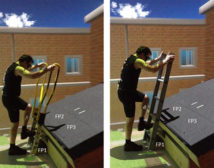Home » Keywords: » NIOSH research
Items Tagged with 'NIOSH research'
ARTICLES
From NIOSH Research Rounds
Modified "walk-through" ladder tested in virtual reality laboratory
March 17, 2017
A NIOSH Science Blog post
Using 3 data sources to create a single wildland fire fighter on-duty death surveillance system
February 21, 2017
Never miss the latest news and trends driving the safety industry
eNewsletter | Website | eMagazine
JOIN TODAYCopyright ©2024. All Rights Reserved BNP Media.
Design, CMS, Hosting & Web Development :: ePublishing









